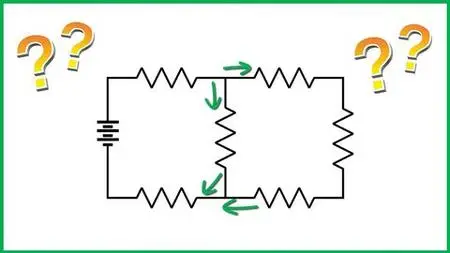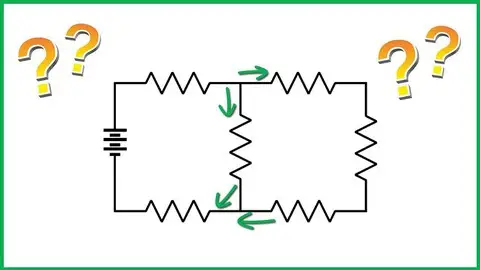Ohm's Law Made Easy for Series Parallel Circuits
MP4 | Video: h264, 1280x720 | Audio: AAC, 44.1 KHz
Language: English | Size: 600 MB | Duration: 1h 43m
MP4 | Video: h264, 1280x720 | Audio: AAC, 44.1 KHz
Language: English | Size: 600 MB | Duration: 1h 43m
Learn How Series Circuit Rules, Parallel Circuit Rules and Ohm's Law are used to Solve Series Parallel Math Examples
What you'll learn
Utilize a Simple Method to Apply Ohm's Law to Series Parallel Combination Circuits
Students will become Comfortable Calculating Total Resistance in Series Parallel Circuits
Learn and Understand How to Use Series Circuit and Parallel Circuit Rules to Solve Series Parallel Math Examples
Understand the Effects that High Resistance Issues can have on Series Parallel Circuits
Requirements
It is easier to Understand this Course if you have taken the "Ohms Law Made Easy for Series Circuits" Course.
It is easier to Understand this Course if you have taken the "Ohms Law Made Easy for Parallel Circuits" Course.
Description
Welcome to Ohm’s Law Made Easy for Series Parallel Circuits. By the end of this course, students will be comfortable with the Voltage, Current, Resistance and Power Calculations for Series Parallel Circuits. Solving for total Resistance is explained in detail as well as how to use a "Math" or "Rule" approach to determine the answers.
Ohm’s Law expresses the relationship between Voltage, Current and Resistance in an Electrical or Electronic Circuit. By knowing any two values, voltage and current, voltage and resistance, or current and resistance, the third value can be calculated mathematically. Understanding the Math behind these relationships can greatly improve you understanding and diagnostic thought process.
Series Circuits are used when lower than source or battery voltage is desired, or when you want components to share the source voltage.
Parallel Circuits are used when we want each device to receive the full source voltage. In Automotive circuits, most are parallel because, more often than not, it is desired that each component receives full battery or source voltage.
Series Parallel Circuits are used when we want one device, for example a switch, to control multiple devices, or when we want to reduce the voltage available to a group of devices. An example would be using a resistor in the series part of the circuit to reduce the voltage available to the Headlights which are in Parallel to allow for Daytime Running Lights Operation. Daytime Running Lights (DRL), are used to a allow a vehicle to be seen more easily by other drivers in Daylight situations.
Demo videos are provided at the end of the course using bulbs and switches to help to solidify your understanding of Series Parallel.
This course is Geared toward Automotive students, Beginning Electronics Students and Do it Yourselfers who desire a Solid Foundation and Understanding of Series Parallel Circuits. This course does more than just show you a formula and tell you about a concept, it walks you through the thought process, the steps, and the reasoning behind them.
This course provides practice examples and detailed explanations of how the answers were calculated and determined.
Understanding Ohm's Law Math when coupled with Basic Electrical Fundamentals, can help students understand incorrect voltage measurements and become better at troubleshooting, and Electrical diagnostics.
Let's get started!
Who this course is for:
Beginner Electrical Students who want to Learn the Foundation Material to Help them improve their Diagnostic Skills
Do it Yourselfers who want a solid foundation in Basic Electrical Circuits and the Math behind them.
Intermediate Students who have never quite understood what Ohm's Law was all about.



